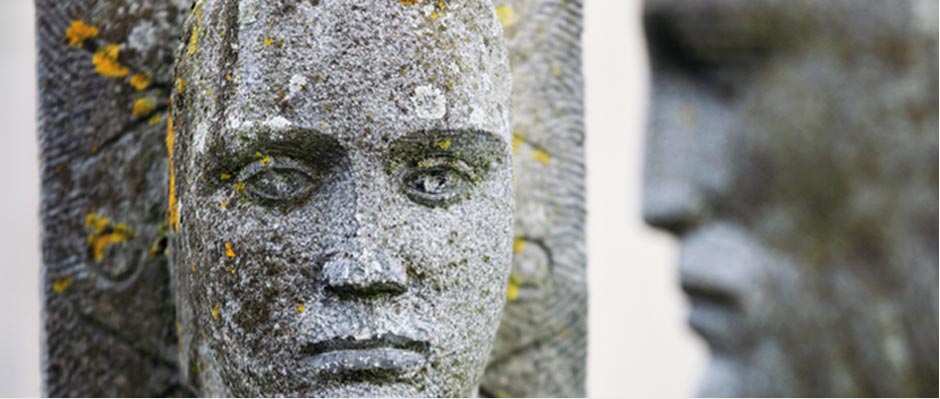The Death of Saimer
by Fred Conlon (RIP)
Commission arising from the Per for Art Scheme, The Death of Saimer is a life size Sculpture made from stone, located in Ballyshannon, Co. Donegal. 2 stone carved figures based on The Parthenon, the story of the first Irish inhabitants, who are said to have lived on the tiny island on Inis Saimer, Ballyshannon, Co. Donegal.
The Death Of Saimer, 1991
The story of The Parthenon, which is said to be the first judicial trail in Ireland, was also the inspiration of an LED text piece by artist Locky Morris, commissioned for the new courthouse in Ballyshannon 2005 by the Department of Justice.
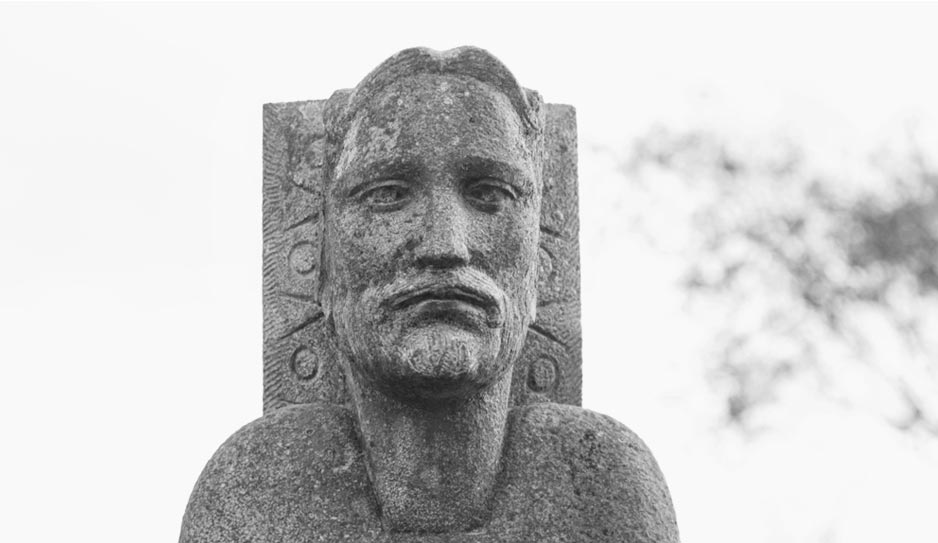
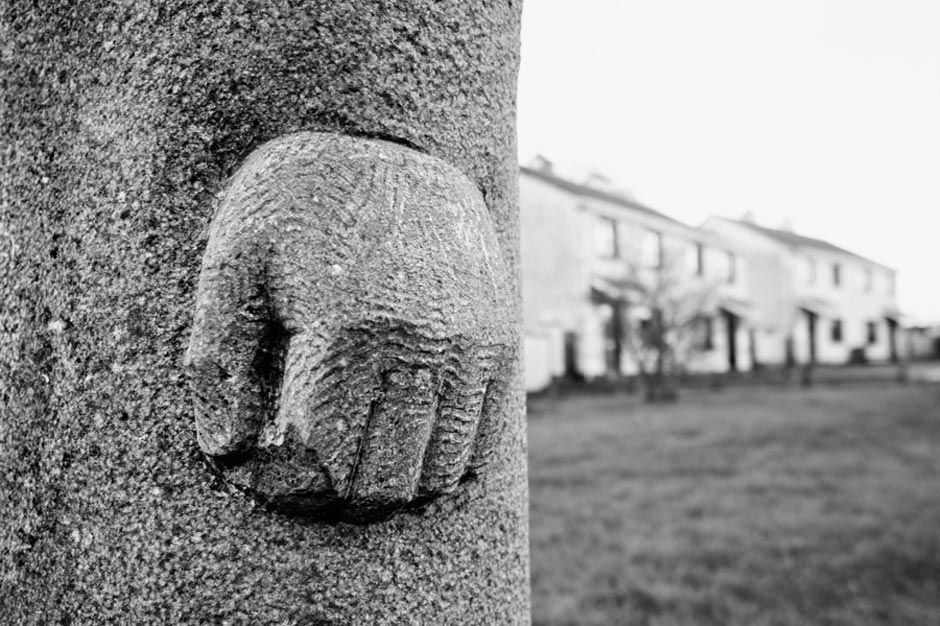
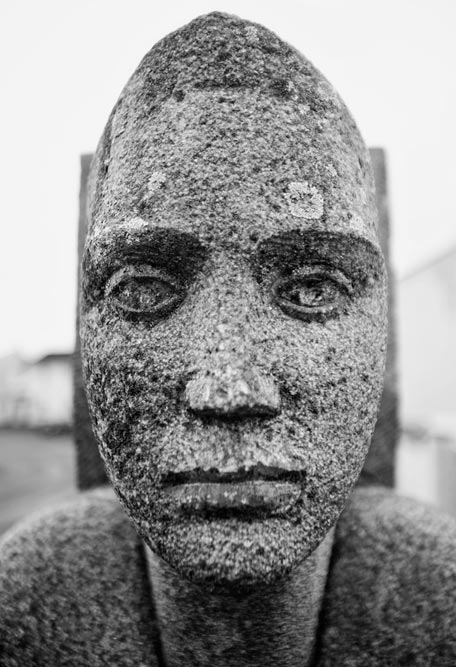
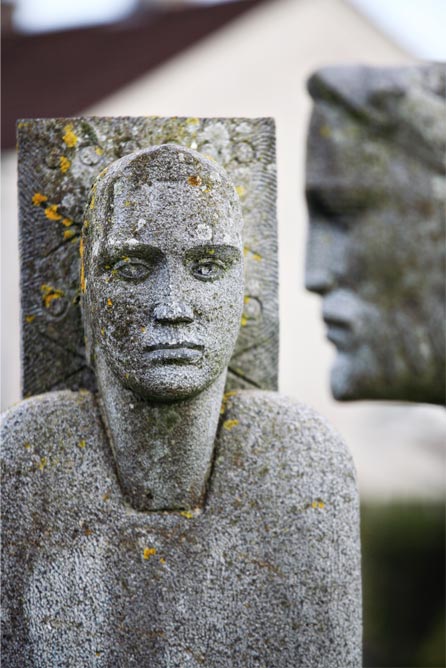
Biography of artist
Fred Conlon
Fred Conlon was born in Killeenduff, Easkey, Co Sligo. He attended the local National School and the Vocational School n Easkey. He was awarded a five year scholarship to the National College of Art and Design, awarded by Co Sligo V.E.C. Self taught in the Arts to this stage, Fred commenced his formal studies in the Art to the age of 17 at the National College of Art in 1960. Initially he studied Painting, Sculpture, Drawing and a range of crafts but he increasingly came under the influence of Domhnail O'Murchadha, assistant Professor of Sculpture who encouraged him to specialise and to do a Sculpture Diploma. He recalls with fondness the humanity, good humour and visionary intellect of Domhnail.
Fred did six years study here where he obtained the Department of Education's Art Teachers Certificate and became an Associate of the National College of Art in Sculpture. He took up a position as Art Teacher in Navan Vocational School and returned to the National College of Art one and a half years later where he taught in the School of Sculpture from 1969 to 1972.
He longed to revive his links with the West of Ireland and returned to Sligo in 1972. He taught for one year in the Vocational School there. He was appointed as a Lecturer in the Regional College the following year and was instrumental in developing a diploma in Art fort the College.
He lectured in sculpture and drawing there until 1989 when he took early retirement to devote all his time to being a professional sculptor. His contribution to visual education was instrumental in helping others on their pathway to achieving their potential as teachers and artists.
He lectured in sculpture and drawing there until 1989 when he took early retirement to devote all his time to being a professional sculptor. His contribution to visual education was instrumental in helping others on their pathway to achieving their potential as teachers and artists.
He has exhibited with most of the major annual Group Exhibitions including Independent Artists, Oireachtas, the Royal Hibernian Academy and Sculpture in context. He has been involved in a number of symposia at home and abroad including India on two occasions. He believes that the Symposium movement, with the sculptors interacting with the organisers and the general public, is a good way to design site-specific sculpture and provide a tow-way bridge of communication between sculptor and audience. He has won many Public Commissions through open competition and his work enhances public places as diverse as the wood sculptors in Hazelwood, Sligo to the street sculpture in bronze at Portland row, Dublin, to the road-side sculpture in limestone at Bunratty in Co Clare, as well as the commemorative sculpture in bronze in the Parnell National Park in Co Wicklow
His work shows the versatility of his skills and his understanding of materials. He is as comfortable working in the abstract as he is using the figure on a social,historical or situational context. Indeed underlying his figurative work is hidden the abstract geometry which he realises so well. He likes to allude to what he describes the "human geometry" which makes the onlooker adapt to the scale, proportions and forms of the sculpture.
"The philosophy which underlines my work is based on change, continuity and the search for measures in natural order. The value of a sculpture relies on its own existence through time, independent of its creator and should usually speak for itself. It should beckon you to walk into its space, to travel its surface and edge, to sense, to touch, to peer into and ponder. As you leave it should invite you to return another time so that it can communicate further.
Sculpture is a celebration of lime and time. The stone I carve is millions of years of age. It is old and stubborn and reluctant to change but change it must for that is the challenge to the sculptor. The marriage of man and stone through spirit, thought and toil wrestles the forms into a unity of sculpture.To appreciate sculpture is to look, to touch, to sense, to learn and communicate."
